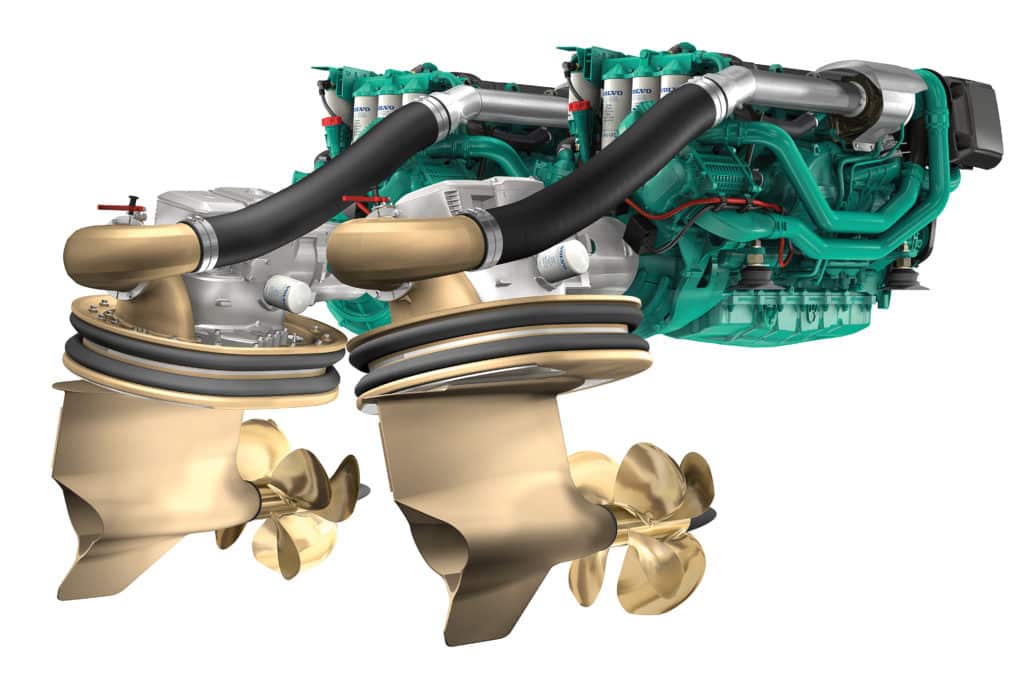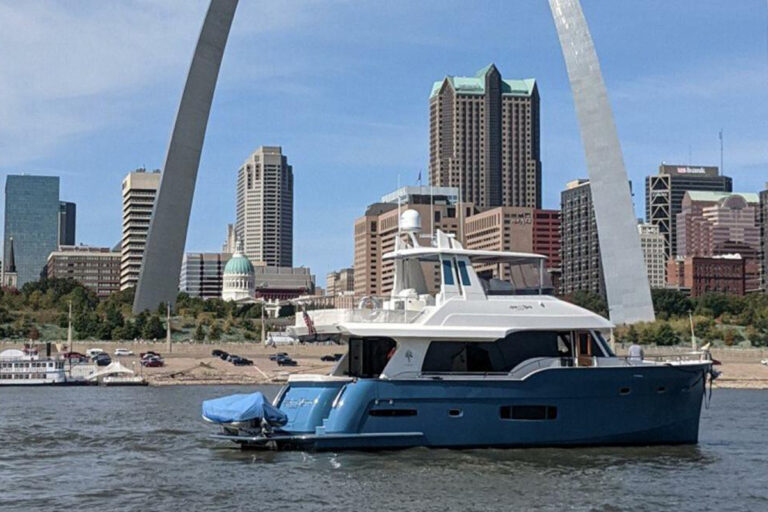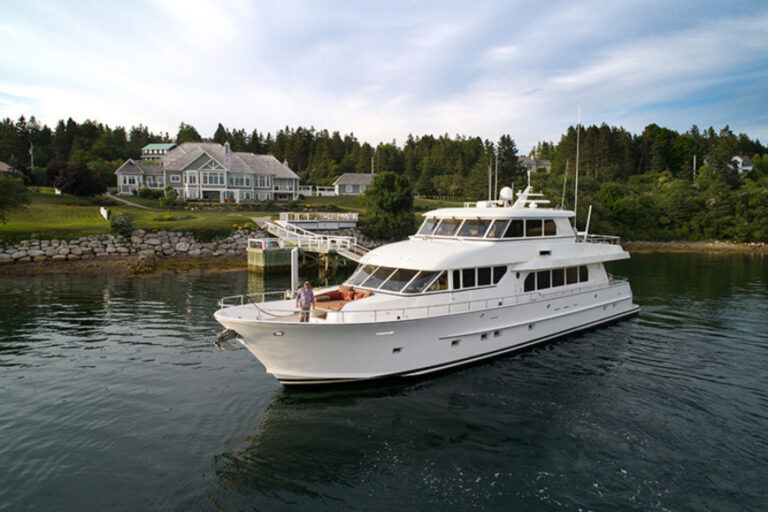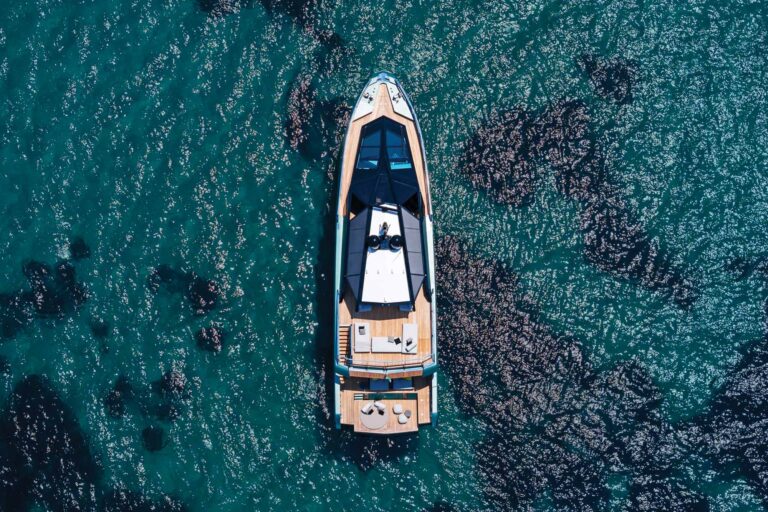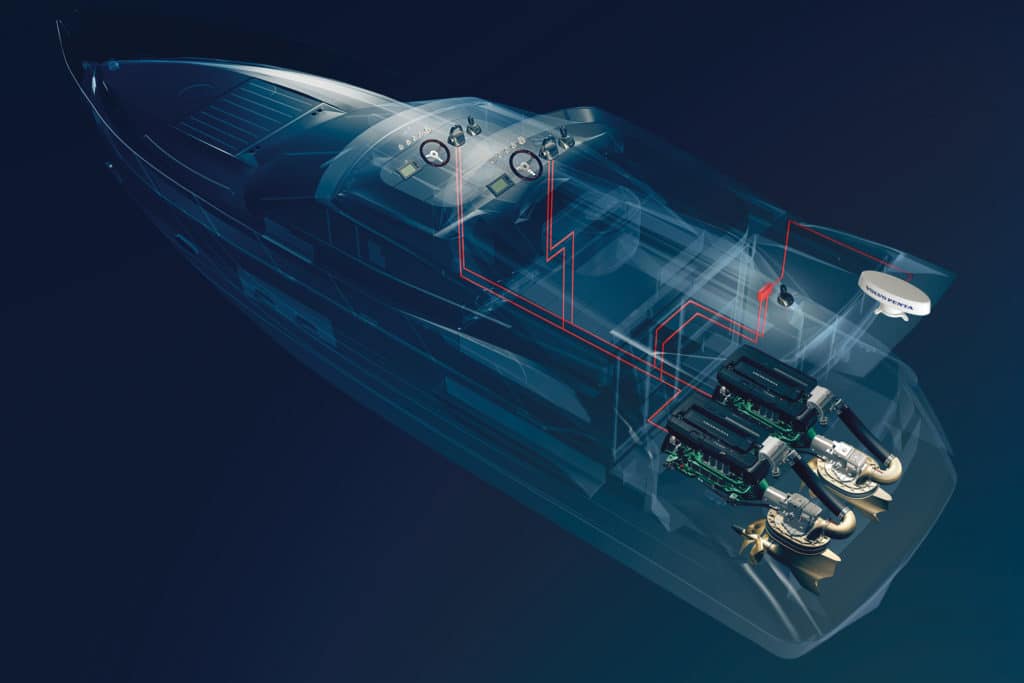
Ron Huibers remembers a decade ago as if it were yesterday. He was among the people who brought the first Volvo Penta IPS pod-drive systems to boat shows, tasked with helping yachtsmen understand why the machinery looked, well, backward. Boaters didn’t always get it, but other showgoers did. “Airplane pilots were coming by the stand, looking at that and saying, ‘Finally, somebody has propellers facing the right direction,’” says Huibers, now the president at Volvo Penta Americas. “It was interesting to see these aeronautical engineers who understood that you don’t run propellers in disturbed air. You run them in clean air. It’s the same in the water.”
“Only 25 percent of the boat is now engine room. It used to be almost 50-50. The engine room used to go almost all the way to the helm station.”
Bentley Collins, Sabre Yachts
Today, the Volvo Penta IPS and Cummins Zeus pod systems are ubiquitous. Volvo Penta alone says it has delivered more than 20,000 units worldwide, with IPS now on 1,100 models from 550 boatbuilders, the majority of them recreational.
Pods, it turns out, affect far more than efficiency. They change design, using less engine-room space, so yachts in the 40- to 50-foot range get an extra stateroom. They reduce entry barriers, allowing for joystick control and integration of helm displays, automatic trim tabs and more, helping novices underway. They benefit owner-operators: 60- and 70-footers can now hold position with the push of a button and no crew. They improve start-up: Look for a Volvo Penta key FOB this summer, eliminating much of the checklist formerly required to get a yacht going.
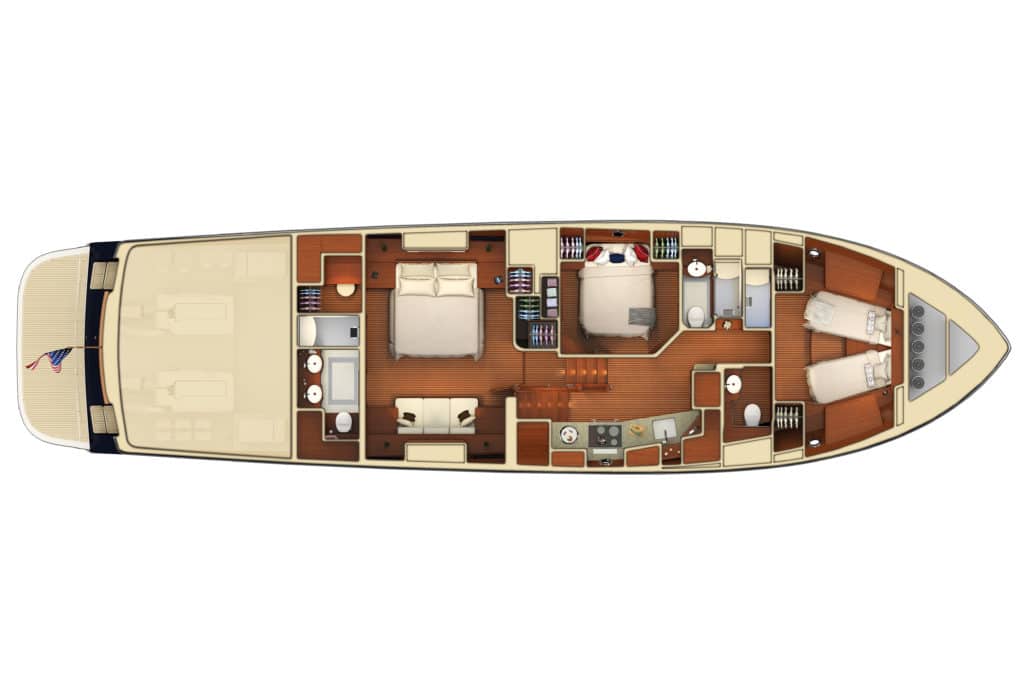
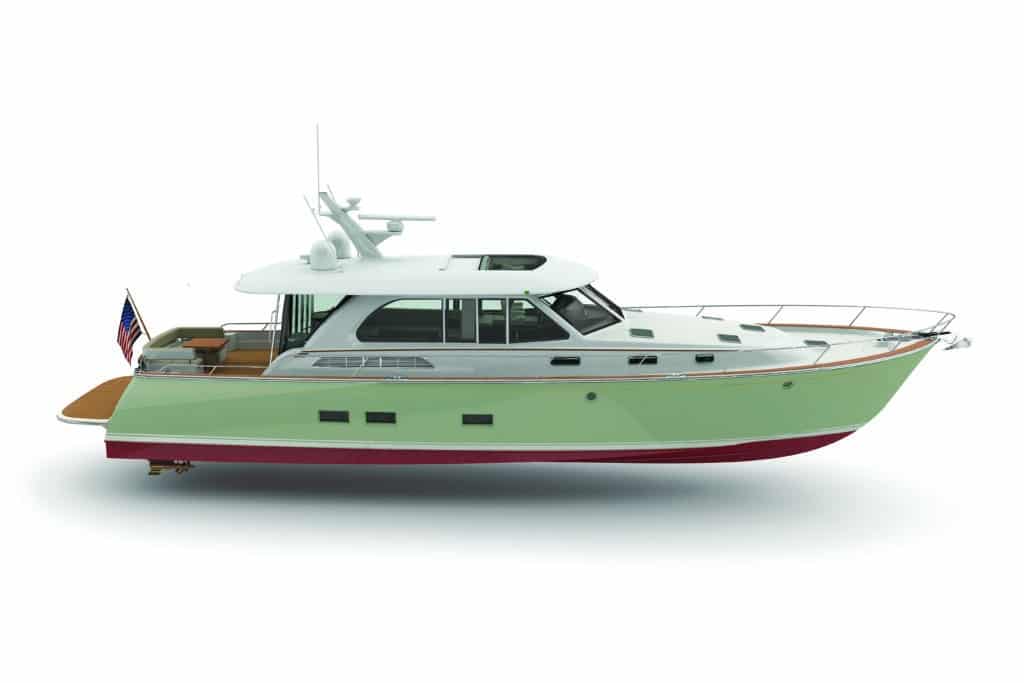
“We adopted it as an alternative first — and then we didn’t sell any straight-shaft boats after that,” says Bentley Collins, vice president of marketing and sales at Sabre Yachts. “We redesigned everything in our range from 2009 onward, new hulls designed for pods. We don’t build any traditional shaft drives anymore.”
Jens Bering, head of product management for Volvo Penta North America, sees more evolution soon. At some yards, engine installations happen just a few weeks before a build finishes, as opposed to at the start — freeing up capital to help builders improve their liquidity. In pilot boats, Volvo Penta is working with designers on hatches for easy engine change-outs, shortening a monthslong process to just two hours. Bering sees that feature in recreational yachts by 2021 or 2022.
And in the next decade? The system should be ready to integrate with electric propulsion as battery technology evolves. “We could offer today, if the marketplace wanted to pay for it … a hybrid,” Huibers says. “We could offer the Prius of boats.”
